"In those blinds, you can find the microcosm of my whole career,” says Toronto-based designer Colette van den Thillart, referring to the shades covering her living room windows.
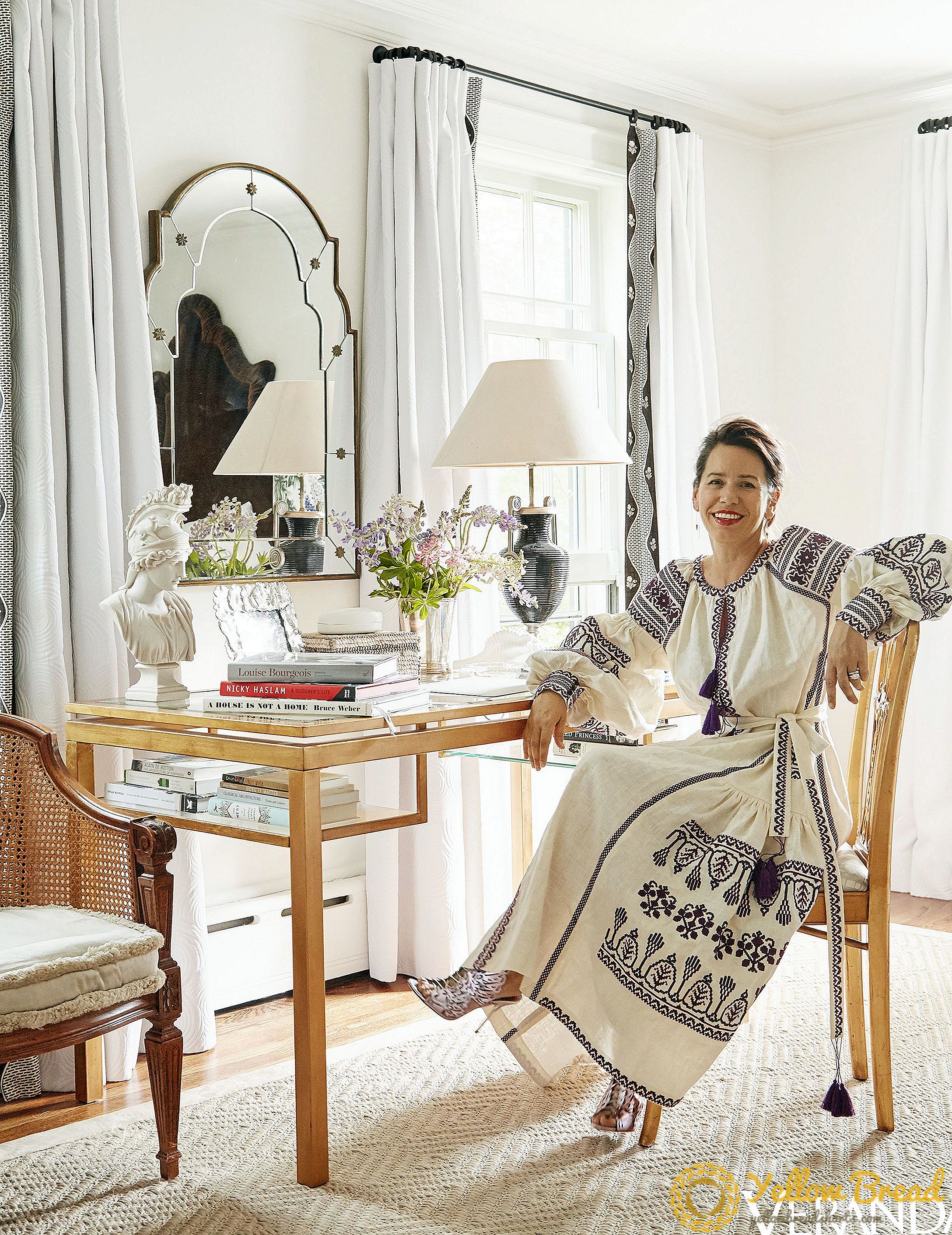
She designed the geometric objects atop the terrazzo garden tables from the Conran Shop.
“The fabric has such a place in my heart.” Called Shutter Stripe, the linen-cotton fabric was originally designed by iconic English decorator John Fowler (who named it Venetian Blind) and is now part of a textiles line she produces with London interior designer Nicky Haslam.
Van den Thillart met Haslam, whom she calls her “best friend,” when her husband's business took the couple to London, where she pursued a graduate degree in French and English decorative arts. While researching a paper on Fowler, she reached out to Haslam, who owns Fowler's former hunting lodge. “We met, and it was just kismet,” she says.
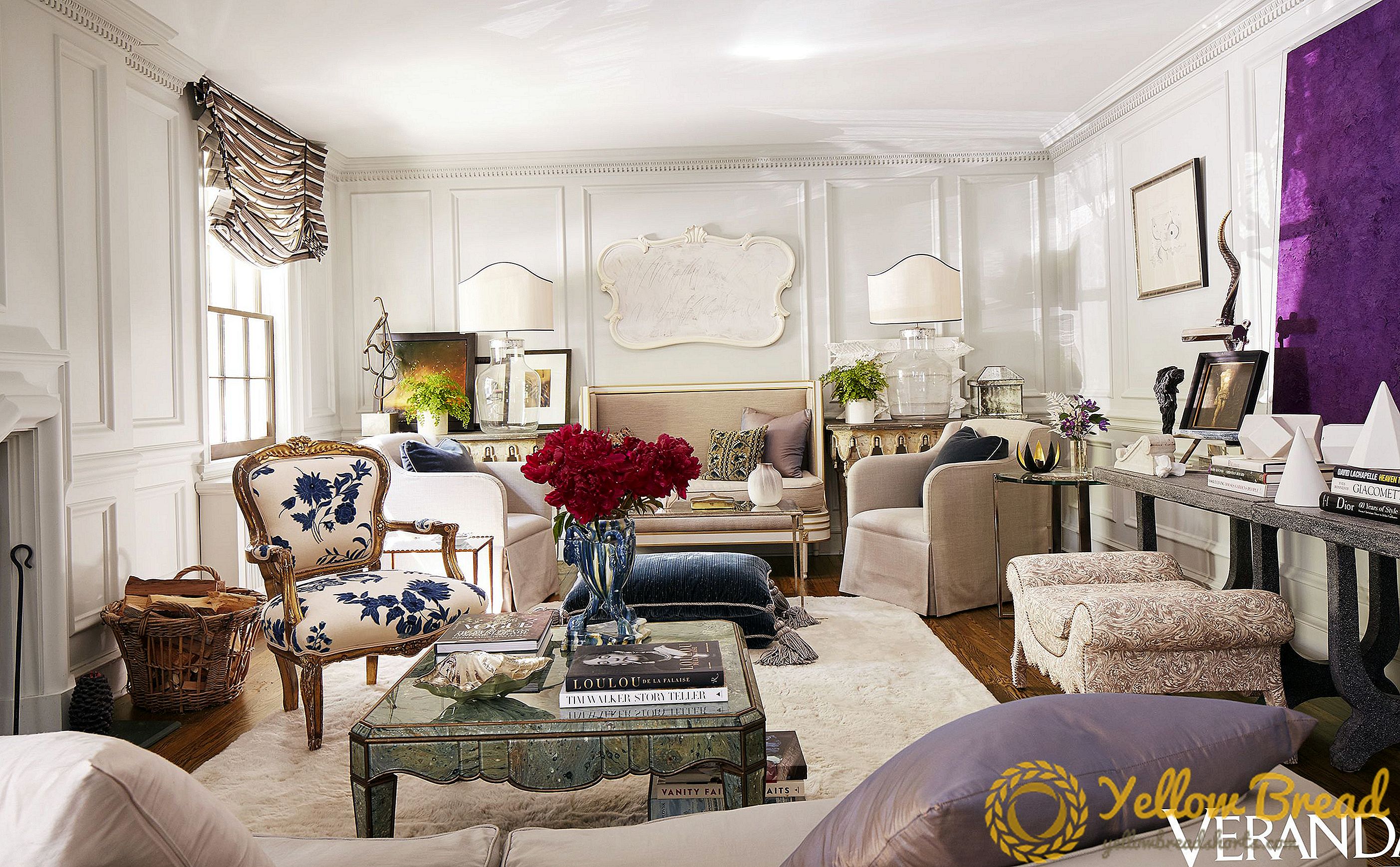
A 19th-century Italian chair is in a Marvic Textiles crewel; the Italian glass lamps are custom.
Before long, the two were working together. Even though van den Thillart and her family, which includes two teenage daughters, have recently moved back to her hometown of Toronto, she and Haslam still collaborate on projects.
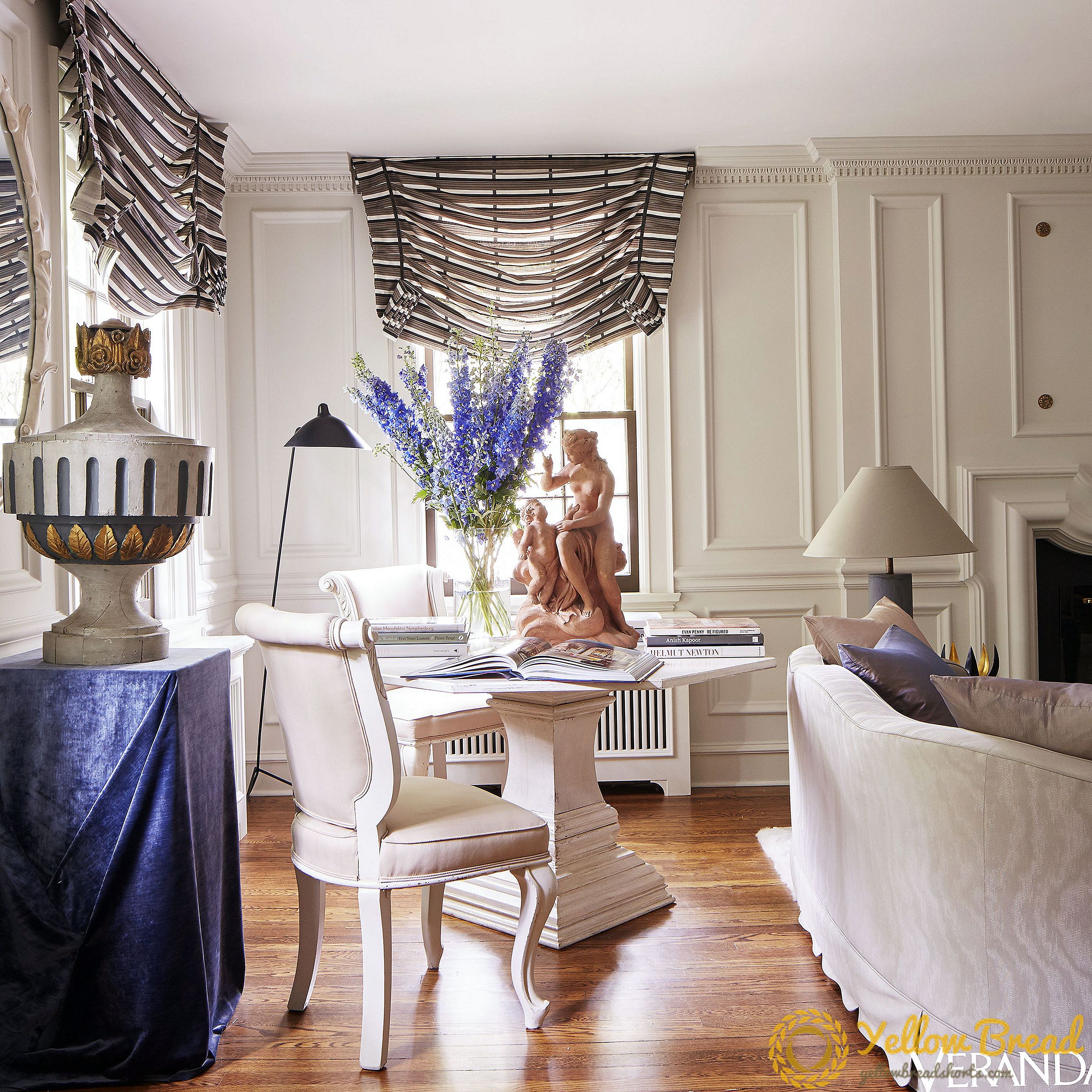
The 19th-century Russian chairs were purchased at Christie's; table, Nicky Haslam Design; Roman shades in Shutter Stripe by Nicky Haslam for Turnell & Gigon.
Her own home, a 1920s center-hall neo-Georgian in the Rosedale enclave of the city, is chock- full of evidence of the time van den Thillart spent on the other side of the pond. In the dining room, for example, the walls are covered in Grotto, a velvet printed with a digital image of a wall she and Haslam installed in a house in the English countryside.
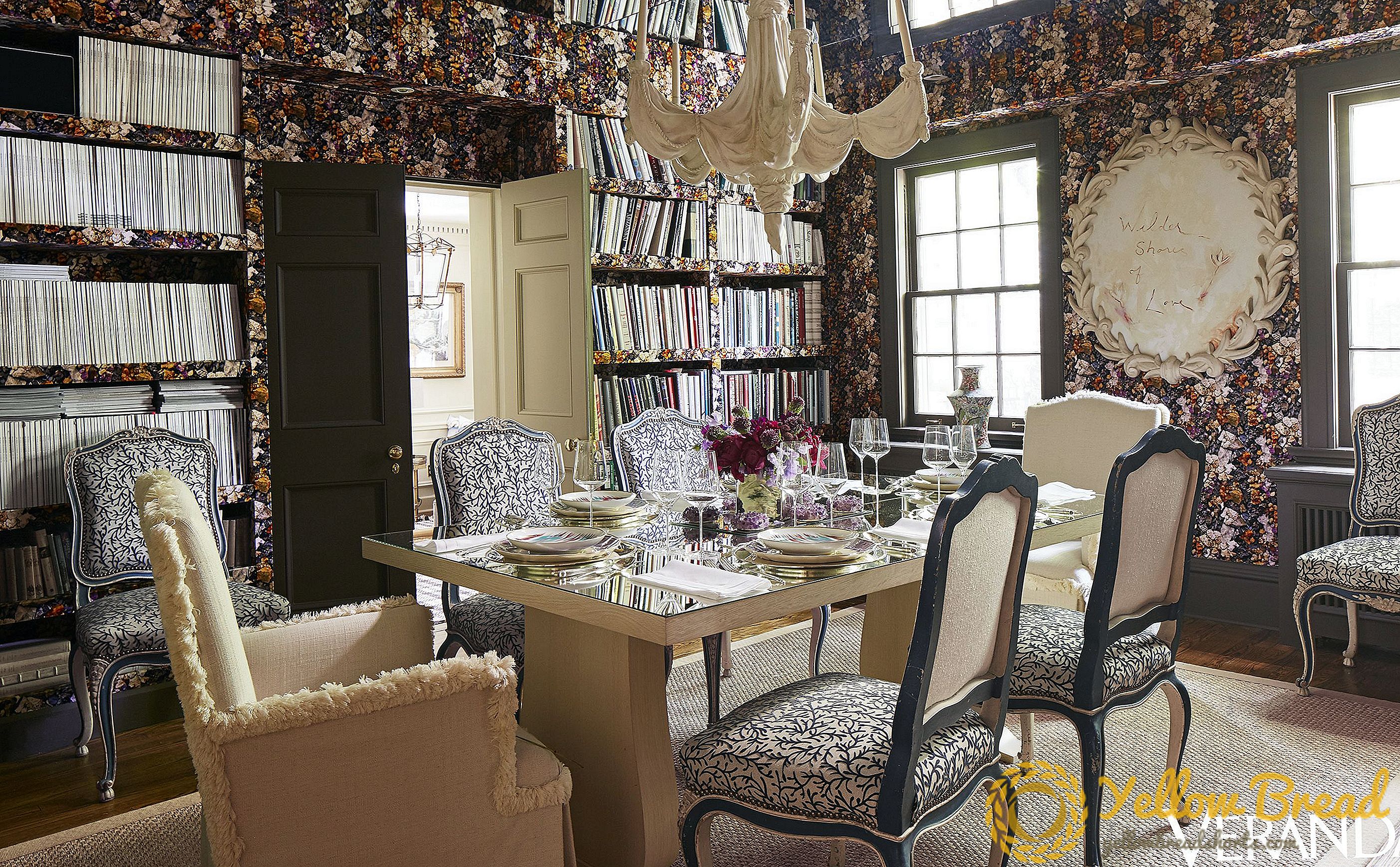
The dining room evokes the feeling of a garden grotto. Van den Thillart designed the plaster wall piece, which reads “Wilder Shores of Love.” The vintage Sirmos chandelier is from AWK Design Antiques; wallcovering, Grotto velvet by Nicky Haslam for Turnell & Gigon.
“We did a feature wall in flint, fossils, and semiprecious stones, like a real grotto,” she says. “This fabric is a mash-up of a complicated 18th-century idea and modern technology. You get something completely contemporary.”
Van den Thillart says she also has “England to thank” for her fearlessness when it comes to her sense of scale, especially when applied to lamps. “Small lamps look anxious to me,” she observes, “whereas bold-scale items project confidence.” In the living room, the oversize glass lamps on a pair of consoles ank a settee, above which hangs a piece of plaster art made by the designer. “When I need something with personality, I sometimes just make it myself,” she says.
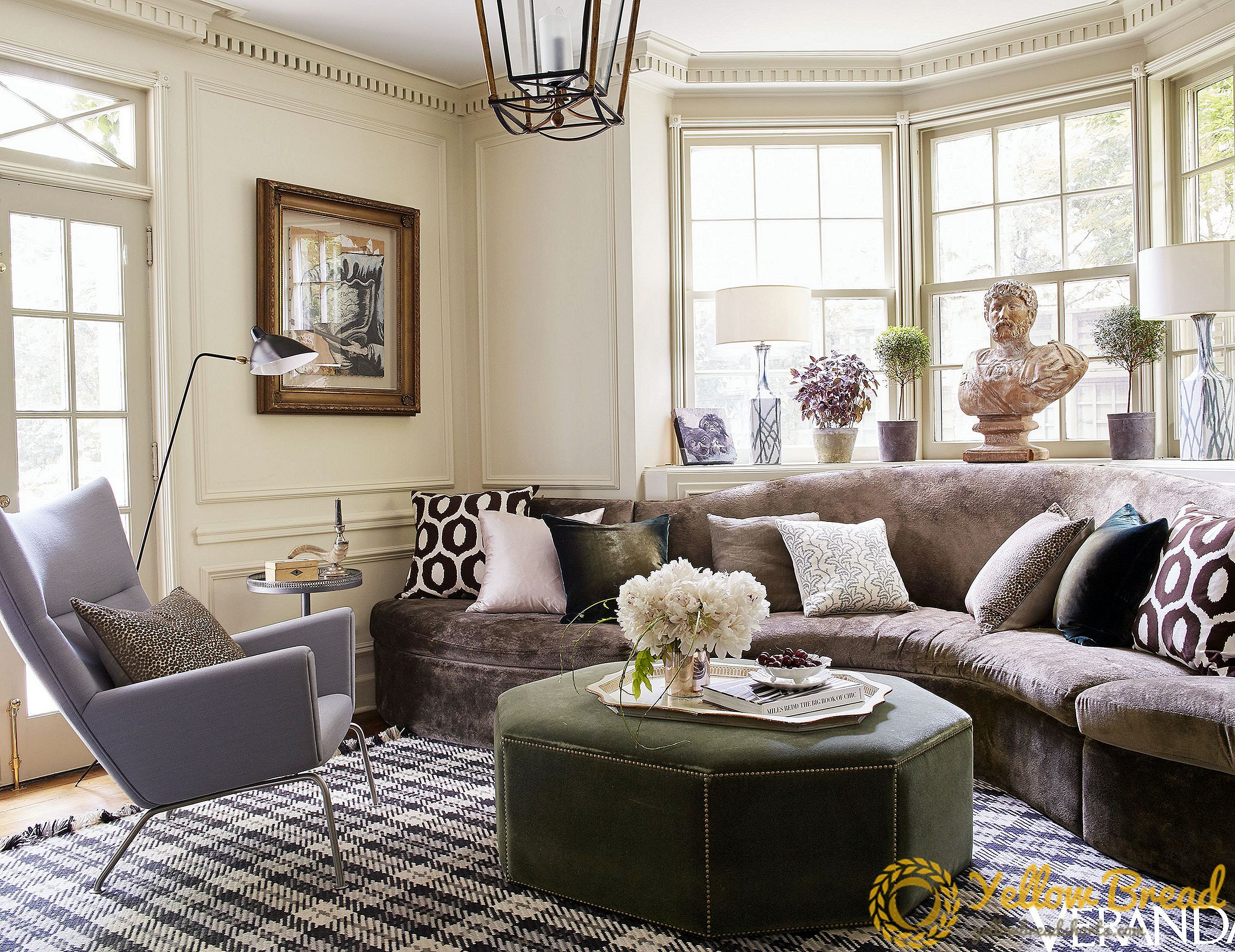
In the sitting room off the garden, the Hans Wegner wing chair is from Carl Hansen; the sofa in a Lee Jofa velvet and the Y&Co. rug are both custom.
Though van den Thillart honors requests from clients for “Zen-like” monochromatic master bedrooms, in her own lair, she opts for color and exuberance. “My idea of a retreat is something that picks me up,” she says. “What feeds my soul is pattern and whimsy.”
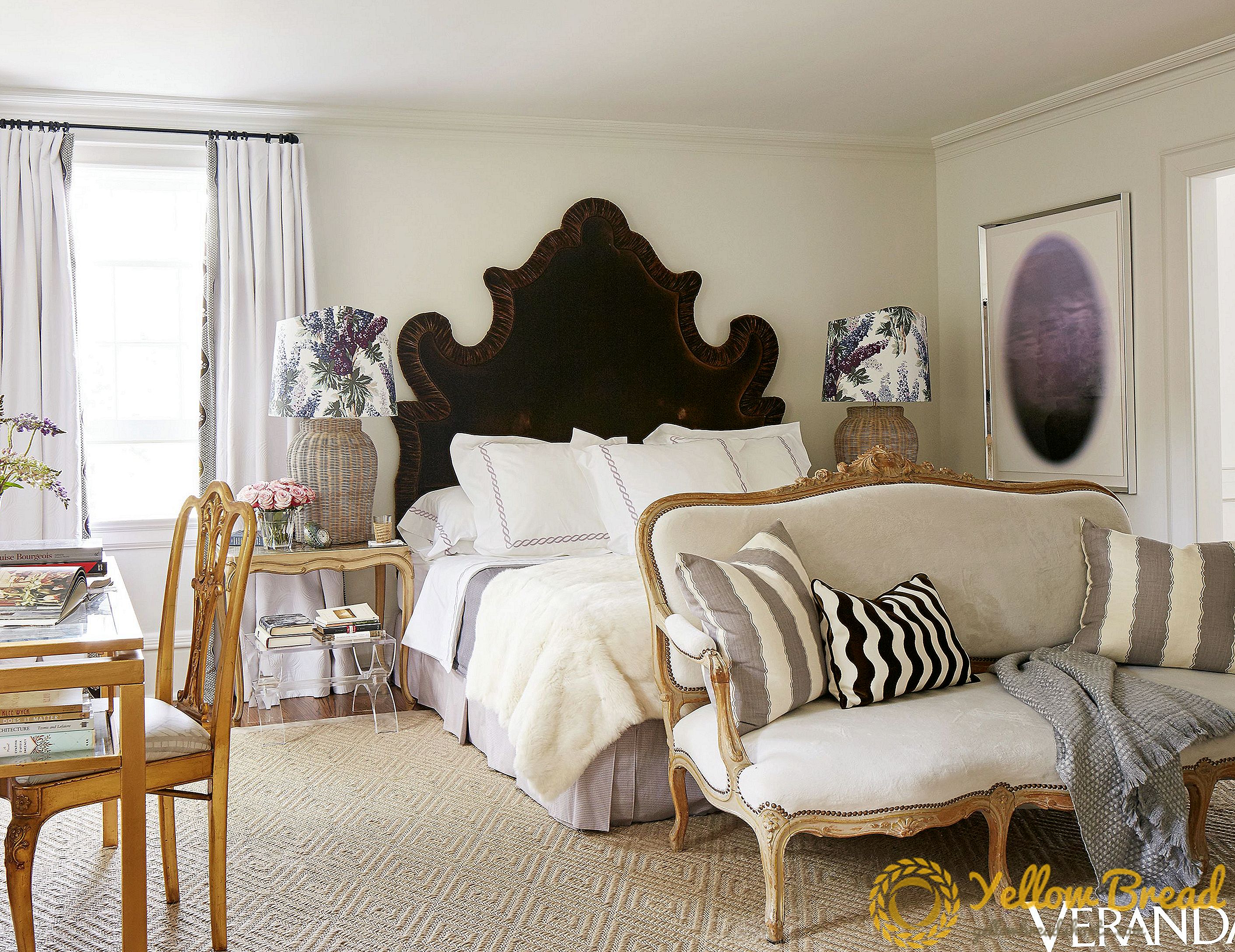
The master bedroom's custom headboard is in a silk velvet; lamps from OKA have custom shades in Rose Cumming's Delphinium fabric.
The room's curvy headboard is covered in silk velvet, the designer's favorite. “I'm a complete velvet addict,” she says. “I put it on as many things as possible.” The urn-topped plinth in the living room is draped in blue velvet, but even pieces that undergo more wear and tear get the sumptuous treatment.
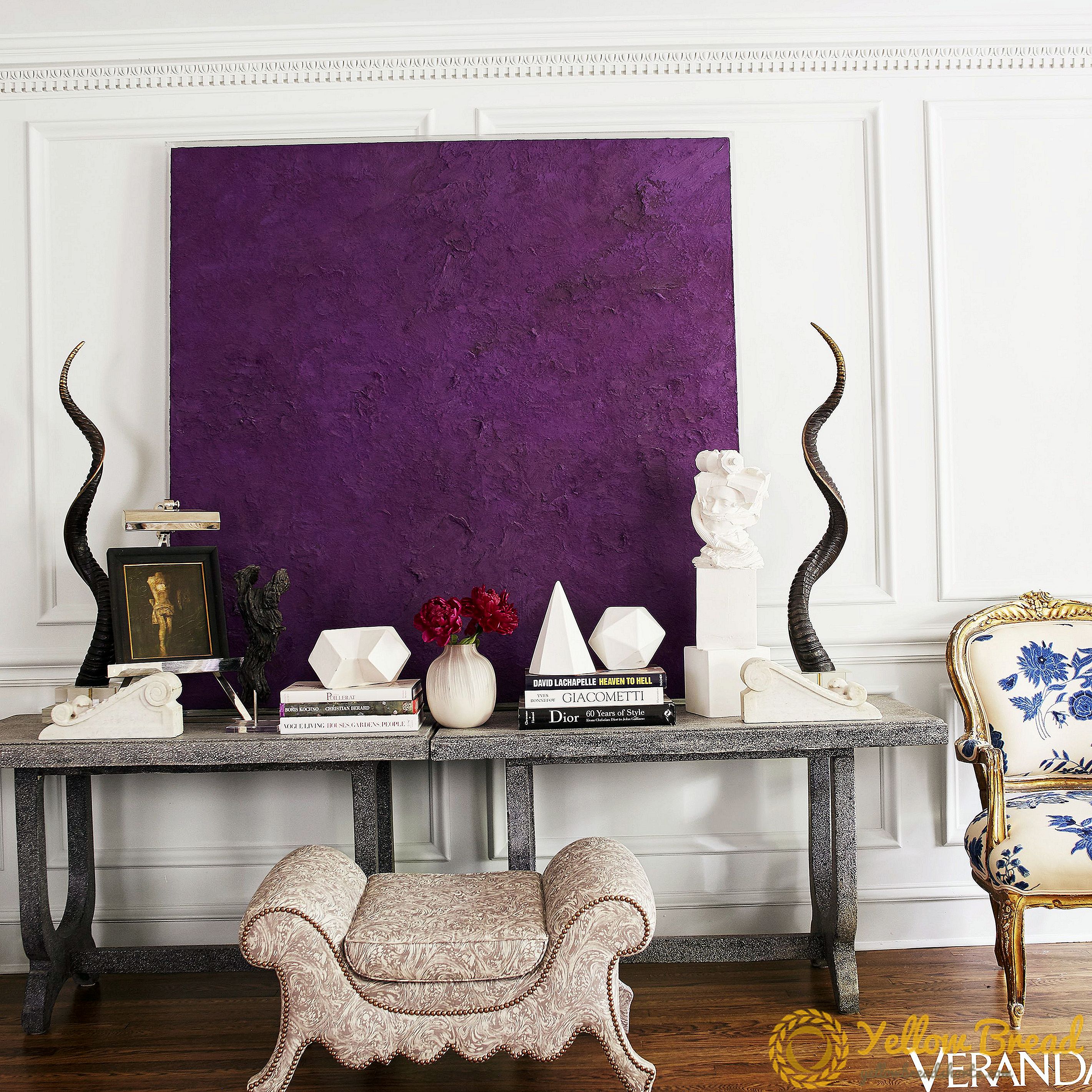
A contemporary painting by James Lahey, from Galerie de Bellefeuille, provides a rush of color in the living room.
The sitting room's serpentine sofa is upholstered in a rich mink-colored chenille, while the silk-velvet Turkish-style oor cushions and faux-fur rug in the living room are further examples of what van den Thillart calls the “plush warmth” that marks her eclectic, layered approach.
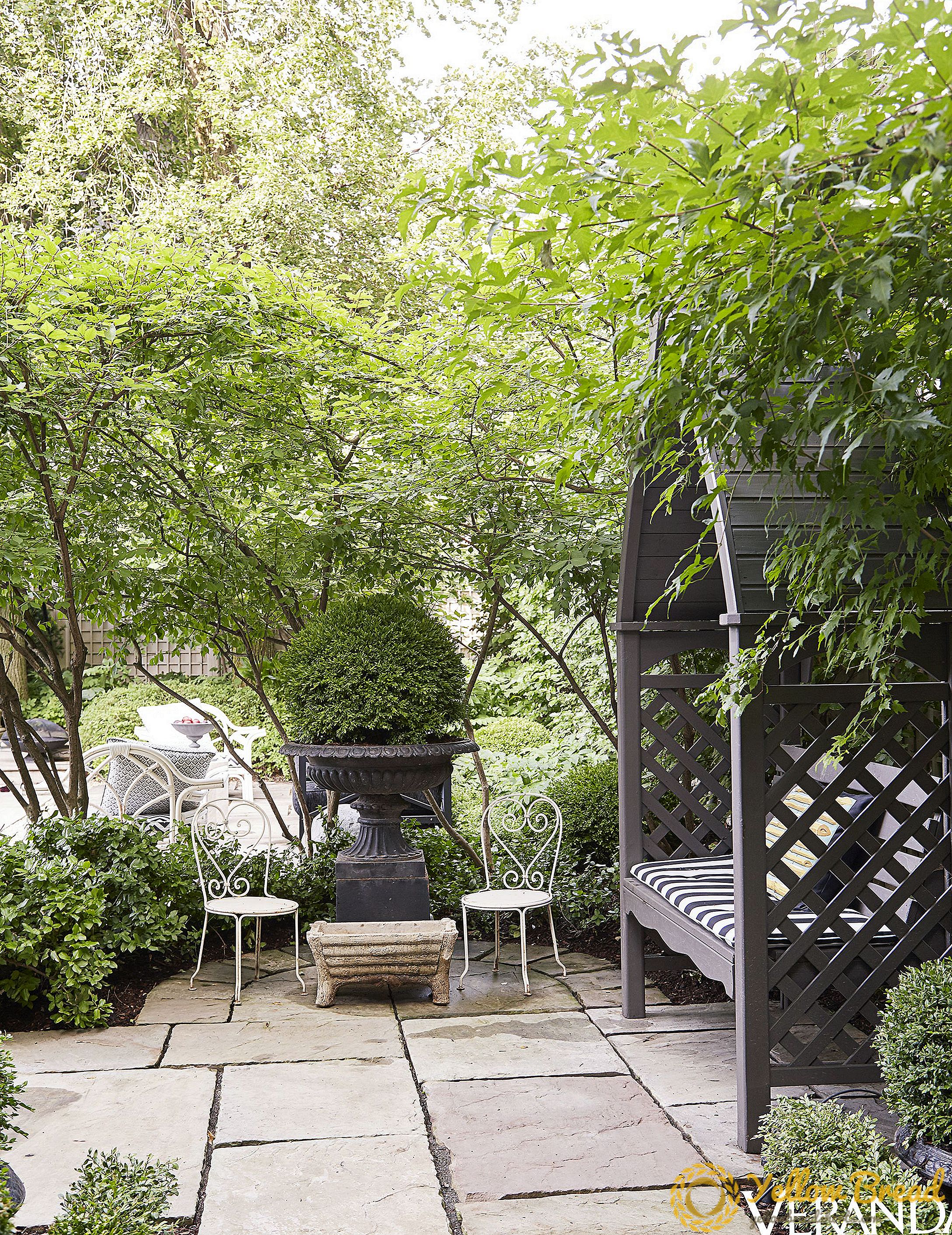
The garden is a welcome respite on warm days.
“We're in a cold climate,” she observes of her Canadian surrounds. “I wanted to create rooms that are comfortable and cozy.”






